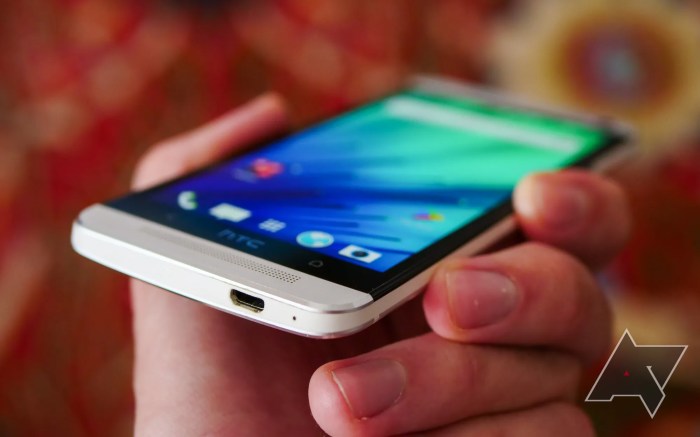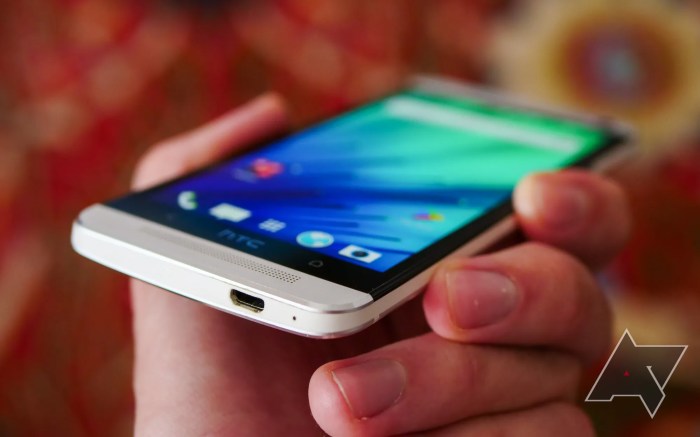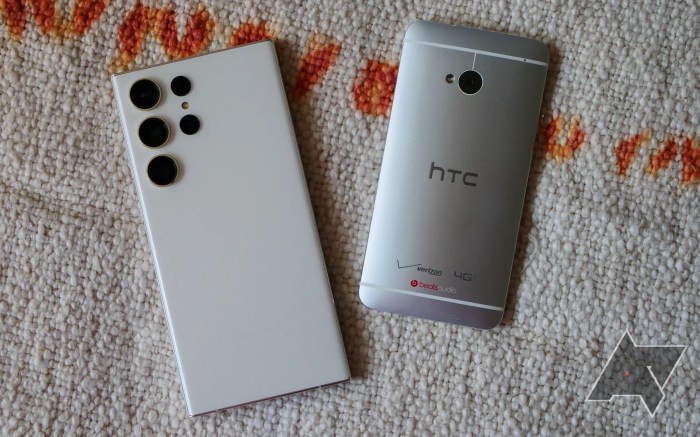htc one m7 is a smartphone that marked a significant turn in mobile design and performance when it was released. With its impressive specifications and sleek design, it captured the attention of tech enthusiasts and everyday users alike. This device not only showcased innovative features but also set a benchmark for future smartphones, establishing HTC’s reputation in a competitive market.
In this exploration, we will delve into the HTC One M7’s detailed specifications, design aesthetics, camera capabilities, user experience, and its lasting impact on the smartphone landscape. By examining these elements, we gain insight into how the HTC One M7 distinguished itself among its peers and influenced the evolution of mobile technology.
HTC One M7 Specifications

The HTC One M7, released in 2013, marked a significant shift in the smartphone landscape with its premium build quality and innovative features. Positioned as a flagship device, it combined advanced hardware with a sleek design, making it a strong contender against competitors from the same era.The specifications of the HTC One M7 reflect its aim to provide a high-end user experience.
The device was equipped with a range of features that not only highlighted its performance but also its multimedia capabilities.
Technical Specifications Overview
The HTC One M7 was known for several distinctive specifications that contributed to its reputation. Below is a detailed overview of its key features and capabilities:
- Display: The M7 featured a 4.7-inch Super LCD3 display with a resolution of 1920 x 1080 pixels, resulting in a pixel density of approximately 468 ppi. This made for vibrant colors and sharp images.
- Processor: It was powered by a Qualcomm Snapdragon 600 processor with a quad-core CPU clocked at 1.7 GHz, providing smooth performance and efficient multitasking.
- RAM: The device included 2GB of RAM, which enabled efficient app management and overall system responsiveness.
- Storage: The HTC One M7 was available in 32GB and 64GB variants, although it lacked expandable storage options, which was a notable drawback for some users.
- Camera: The rear camera featured a 4MP UltraPixel sensor, which focused on low light performance and included optical image stabilization. The front camera was 2.1MP, suitable for selfies and video calls.
- Battery: A non-removable 2300mAh battery powered the device, providing a day’s worth of usage under standard conditions.
- Operating System: The HTC One M7 shipped with Android 4.1.2 (Jelly Bean) and was later upgradable to newer versions, featuring HTC’s Sense UI for enhanced user experience.
- Build Quality: The device boasted an aluminum unibody construction, which not only enhanced durability but also added a premium feel to the smartphone.
The HTC One M7’s specifications positioned it competitively against other smartphones released in 2013, such as the Samsung Galaxy S4 and the LG G2. While the Galaxy S4 came with a larger display and expandable storage options, the M7’s design and audio performance (thanks to BoomSound speakers) provided a unique advantage in the market. In contrast, the LG G2 offered a larger battery and innovative rear buttons but did not match the M7’s overall aesthetic appeal.
The Asus Zenfone 7 stands out with its impressive camera capabilities and robust performance. This smartphone not only offers a sleek design but also a unique flip camera that enhances your photography experience. Whether you’re capturing landscapes or selfies, the Zenfone 7 ensures high-quality images, making it a top choice for photography enthusiasts seeking innovation in technology.
“The HTC One M7 was celebrated for blending premium design with high-end specifications, setting a benchmark for future flagship smartphones.”
Design and Build Quality
The HTC One M7 is a striking example of modern smartphone design, showcasing a blend of elegance and durability. Its construction emphasizes high-quality materials and a refined aesthetic, making it stand out in a crowded market. The device features a chassis primarily made from aluminum, which not only contributes to its premium feel but also enhances its structural integrity. The unibody design allows for a seamless appearance, eliminating any visible seams that could detract from its sleekness.
The glass front, coupled with its curved edges, adds a touch of sophistication while also improving grip.
Materials Used in Construction
The choice of materials in the HTC One M7 significantly impacts its overall performance and user experience. The following highlights the key materials and their implications on the device’s quality:
- Aluminum Unibody: The aluminum construction provides a robust framework that resists bending and flexing, ensuring longevity.
- Corning Gorilla Glass: The front features Gorilla Glass, which offers scratch resistance and protection from minor drops, preserving the device’s visual appeal.
- Polycarbonate Accents: Used in certain areas for antenna signals, polycarbonate is lightweight and durable, maintaining the overall balance of the device.
Design Aesthetics and Ergonomics
The design of the HTC One M7 is a careful balance of aesthetics and functionality, appealing to both design-conscious consumers and those seeking a comfortable user experience. The device’s thin profile and rounded edges enhance its ergonomics, facilitating ease of use during prolonged periods. The front-facing speakers, known as BoomSound, are positioned above and below the display, providing an immersive audio experience while also contributing to its distinct design.
Furthermore, the placement of the power button and volume rocker is intuitive, allowing for quick access without fumbling.
Looking back at the early days of smartphones, the HTC Nexus One played a pivotal role in shaping the mobile landscape. Launched as one of the first devices to run Android, it set a benchmark for future smartphones with its user-friendly interface and solid performance. This device not only introduced users to Google’s vision of mobile computing but also paved the way for the evolution of smartphones as we know them today.
Advantages and Disadvantages of Build Quality
The build quality of the HTC One M7 comes with its own set of advantages and disadvantages that can influence user satisfaction.
- Advantages:
- Premium feel and visual appeal due to high-quality materials.
- Durable construction that withstands everyday wear and tear.
- Lightweight design that is comfortable to hold and use.
- Disadvantages:
- Aluminum can dent or scratch more easily compared to some plastic alternatives.
- Unibody design limits access for repairs and battery replacements.
- The glass front, while aesthetically pleasing, is prone to cracking if dropped.
Camera Performance: Htc One M7

The HTC One M7 was a pioneer in smartphone photography, thanks to its innovative camera technology and features. Launched in 2013, it introduced the concept of UltraPixel technology, which aimed to enhance low-light performance and deliver high-quality images. This section delves into the camera’s specifications, compares its features to contemporaries, and presents photographic examples that showcase its performance in a variety of conditions.The HTC One M7 utilizes a 4-megapixel UltraPixel camera that diverged from the trend of higher megapixel counts in smartphones.
This technology allowed for larger individual pixels, which captured more light, resulting in improved performance in low-light environments. The camera features a f/2.0 aperture, optical image stabilization (OIS), and the capability to record Full HD (1080p) video. The front-facing camera is also noteworthy, featuring a 2.1-megapixel sensor that supports 1080p video recording, making it ideal for selfies and video calls.
Comparison with Other Smartphones
When comparing the HTC One M7’s camera features with other smartphones of its time, several key aspects stand out. Competitors like the Samsung Galaxy S4 and the Apple iPhone 5 were equipped with higher megapixel sensors, yet the M7’s UltraPixel technology set it apart. Here’s a brief comparison of the camera specifications:
| Smartphone | Camera Resolution | Aperture | Optical Image Stabilization |
|---|---|---|---|
| HTC One M7 | 4 MP (UltraPixel) | f/2.0 | Yes |
| Samsung Galaxy S4 | 13 MP | f/2.2 | No |
| iPhone 5 | 8 MP | f/2.4 | No |
The UltraPixel technology offered a unique advantage in low-light photography, while competitors focused on pixel quantity. This led to discussions among users, highlighting that image quality is not solely determined by megapixel count but also by sensor technology and image processing capabilities.
Photography Results in Various Conditions, Htc one m7
The real-world performance of the HTC One M7’s camera can be illustrated through various shooting scenarios. In low-light conditions, such as a dimly lit restaurant, the M7 showcased its capabilities by capturing clear and vibrant images with minimal noise. The optical image stabilization helped counteract hand movement, resulting in sharper images even at slower shutter speeds. In daylight scenarios, the camera excelled in producing well-exposed images with rich colors and good contrast.
The HDR mode effectively helped in balancing highlights and shadows, ensuring that details were preserved in challenging lighting conditions. Examples of photography results include:
Low-light Performance
Images taken at twilight retained clarity and detail, demonstrating the effectiveness of the UltraPixel sensor.
Portrait Mode
The camera managed to create a pleasing bokeh effect in portraits, emphasizing the subject while gently blurring the background.
Landscape Photography
Even in brighter settings, images captured detailed textures and vibrant colors, making it suitable for landscape shots.In summary, the HTC One M7’s camera performance was distinguished by its innovative technology and thoughtful design, allowing it to compete favorably with higher megapixel peers throughout its era.
User Experience and Software

The HTC One M7 is renowned not only for its impressive hardware but also for its robust software experience. Running on Android with HTC’s Sense UI, the device offers users an interface that is both sleek and intuitive. The software has been designed to complement the phone’s premium design, providing an engaging user experience that enhances day-to-day functionality.The user interface of the HTC One M7 features the HTC Sense 5, which introduced several significant changes aimed at improving usability.
One of the standout features is the BlinkFeed home screen, which aggregates social media updates, news articles, and other content into a single, customizable feed. This innovation allows users to have a personalized view of their news and updates at a glance, making it easier to stay connected without navigating through multiple apps.
Software Features and Enhancements
The software functionality of the HTC One M7 is bolstered by various features that enhance its overall performance and usability. The following aspects significantly contribute to the user experience:
- HTC BlinkFeed: As a core feature, BlinkFeed offers real-time updates from various sources, keeping users informed and engaged. This integration is designed to provide a seamless flow of information tailored to individual interests.
- HTC Zoe: This feature allows users to create short video clips using a combination of photos and videos, offering a dynamic way to capture and share memories. The creativity fostered through Zoe adds a unique touch to the photography experience.
- Sense TV: Utilizing the built-in infrared blaster, Sense TV transforms the M7 into a universal remote control. This feature enhances home entertainment experiences by allowing users to control their TV and set-top boxes directly from their smartphone.
- HTC Sense Voice: The device enhances call quality with noise suppression technology, ensuring clearer communications even in noisy environments. This feature is particularly beneficial for users who frequently make calls in busy settings.
Software updates have played a critical role in maintaining the performance and security of the HTC One M7. Over time, HTC released several updates that not only enhanced existing features but also introduced new functionalities. For instance, the software updates improved battery performance and stability, as well as expanded the device’s compatibility with a range of applications. An important update included the transition to Android Lollipop, which brought Material Design aesthetics and enhanced performance improvements, keeping the user experience modern and relevant.In summary, the software experience on the HTC One M7 is characterized by its innovative features and thoughtful enhancements that empower users and make the device a pleasure to use.
Each software aspect is designed to maximize the capabilities of the hardware while providing a fluid and enjoyable interface.
Market Impact and Legacy

The HTC One M7, released in 2013, marked a significant turning point in the smartphone industry, showcasing how design and user experience could elevate a brand’s presence in a competitive landscape. Its emphasis on premium materials, innovative features, and a user-centric approach helped redefine expectations for smartphones, influencing not just HTC but the entire market.The HTC One M7’s impact reverberated through the industry, paving the way for subsequent models from HTC and inspiring competitors to rethink their design and feature strategies.
Following its release, manufacturers began prioritizing build quality, integration of high-resolution displays, and enhanced audio capabilities, which became benchmarks for flagship devices.
Influence on HTC and Competitors
The HTC One M7 set a standard that would influence HTC’s future models, such as the HTC One M8 and M9, which built upon its design ethos and user experience principles. Additionally, its impact can be seen in the strategies adopted by competitors, as many brands began to adopt similar design philosophies and features that were once unique to HTC.Key points highlighting this influence include:
- Design Philosophy: The M7’s aluminum unibody design inspired other manufacturers to invest in premium materials, leading to flagship models from brands like Apple and Samsung adopting similar aesthetics.
- Camera Innovation: The introduction of the UltraPixel camera technology prompted competitors to explore new camera functionalities, enhancing their photography capabilities in future models.
- HTC Sense UI Improvements: The user interface refinements made with the M7 laid the groundwork for subsequent iterations of HTC Sense, influencing UX design across various smartphones.
- Audio Quality: The introduction of BoomSound speakers highlighted the importance of audio in smartphones, compelling competitors to enhance their audio experiences with improved speaker technology.
“The HTC One M7 was not just a smartphone; it was a bold statement that elevated the standard for mobile devices.”
The legacy of the HTC One M7 is evident in today’s smartphone landscape, where the emphasis on design, user experience, and quality continues to dominate market trends. Its influence persists as new devices adopt features that originated with the M7, reinforcing the notion that a well-executed blend of hardware and software can define a brand’s success in a crowded market.